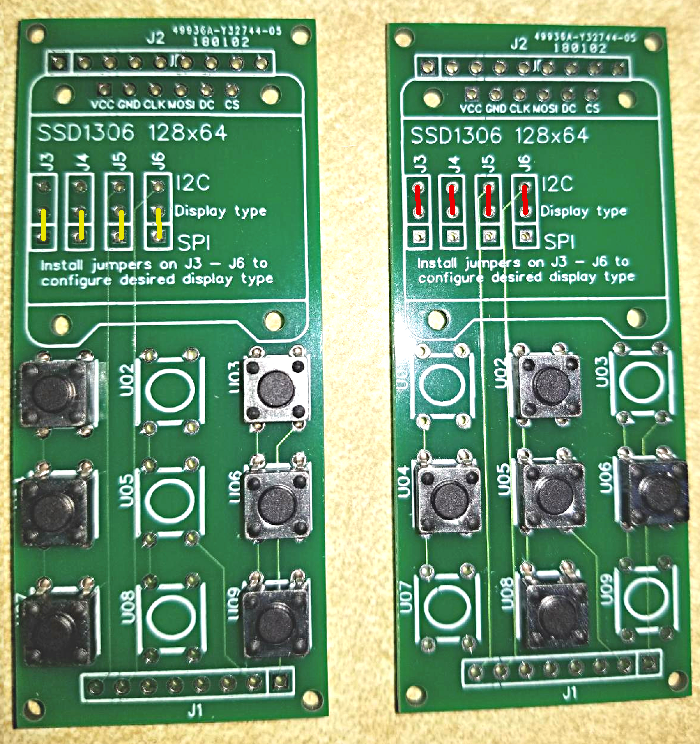@Michael-Link I have been out of touch with MySensors for some time now and looking to slowly get back into it. I created this and a few other boards back in 2018 All of the GERBER files for this are in the "Design Files" tab. Those you should be able to send to JLC PCB or one of the other fab houses and have some made. This was designed to be used with 2 other boards that I designed. There was the processor board and the power supply board. The processor board was designed in a way that I could use a couple different switch boards. This one and a universal multi-switch board that had multiple configurations. If you look here you will see my other boards.
This is an OLED display with a configurable keypad designed to be used as part of a multi board build to create a MySensors based scene controller/light switch that fits inside a standard US single gang wall switch/outlet box. This board has many configuration options available much like the multi-switch board assembly which is another switch board option for the in-wall scene controller. This has been designed to work with my other in-wall scene controller main board.
The Display
The display for this board is a 128x64 OLED display and can accept either a 4 pin I2C version, or a 6 pin SPI version, both with the same outer form factor. Because these OLED displays come in a number of pin configurations, if you plan on using the 4 pin I2C version of the display, you must get one that has the ground as the first pin with the following order (GND, VCC, SCL, SDA). The I2C version is compatible with Rev 1.0 of the in-wall scene controller main board. IF you choose to use an SPI version of the display, you must get a 6 pin version with the following pin layout (GND, VCC, CLK/MISO, MOSI, DC, CS). The SPI configuration for this IS NOT compatible with Rev 1.0 of the main board. It MUST be used with Rev 1.1 of the board which breaks out connections to the MOSI and MISO pins of the SPI bus. Depending on your chosen configuration, you must install 4 jumpers on J3 through J6 on the board. Install them in the upper positions if you are using an I2C display, and the lower positions for the SPI version.
The Keypad
The keypad area of this board is laid out in a 3x3 matrix. This configuration gives the board a lot of flexibility allowing for a number of different switch configurations depending on your needs. The original prototype design was 3 on/off switches in a horizontal stacked configuration. Another proposed configuration was a directional keypad. These two configurations are what gave rise to the 9 button layout in the current design which allowed for both of these configurations, and gave the flexibility for many more.
This is a work in progress, so check back for revision changes.


